This is one of those Ruschia species which give the impression of being stem rather than leaf succulents.
In his magnum opus FLOWERING STONES AND MID-DAY FLOWERS ( published in 1957), Gustav Schwantes has to say the following on this topic:
A number of species are interesting because their leaves appear to be much shortened. In Lampranthus also one sees that the pairs of leaves, arranged cross-wise to each other, are partly united at the base. In this way a quite short tube is formed which is called the leaf sheath. In many species of Ruschia this sheath is considerably longer and united to the stem which it surrounds like a sleeve*.
The free leaf tips are often very short so that altogether there is a considerable reduction of the leaf surface. The stem itself cannot be seen. Where the parts of the leaf that are united into a sheath join there is a seam-like groove, which runs down from one pair of leaves to the next. In this way very remarkable structures are produced. They look somewhat like Horse Tails and present a very antediluvian appearance in consequence; but for us they represent more interesting evidence of the struggle these plants have with the fearful, pitiless African sun. We find therefore, that these very distinct thirst-endurers which, owing to the reduction in the size of the leaves, lose less water by evaporation, occur in arid and barren areas. Such a Ruschia, by its habit, when flowers and fruits appear in long lines on the apparently withered stems, is a most unusual sight.
*Even after the transfer of about a hundred of these species to the genus Antimima, at least twenty of the remaining Ruschias show this phenomenon. (See posts on R. crassa, impressa, karrooica).
R. grisea grows into a lax shrublet to 30 cm tall with stiff, spreading branches.
The leaf sheath is up to 5 mm long; the free parts are 2-4 mm long and bear 1 or 2 small teeth at the tip. The pale pink flowers are about 1.4 cm in diameter and appear in November-December.
One can come across this species on shale flats from the Little Karoo to the Calvinia-Sutherland and the Middelburg area.
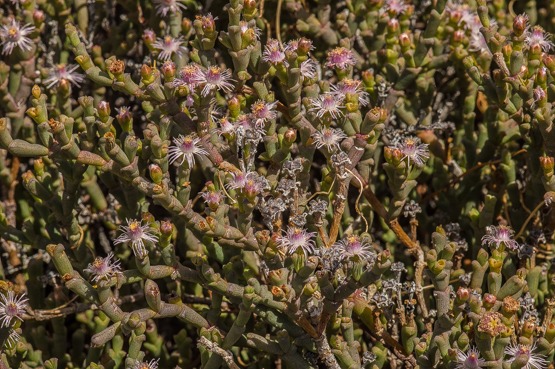
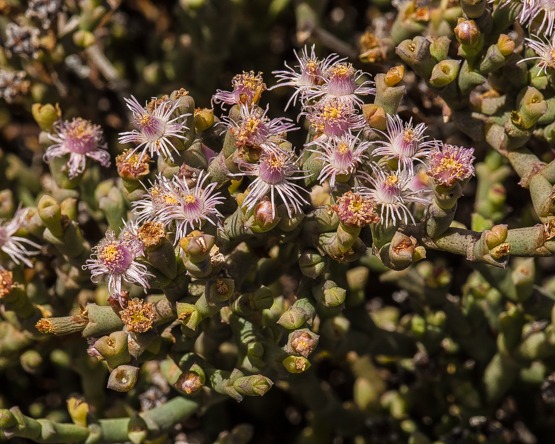
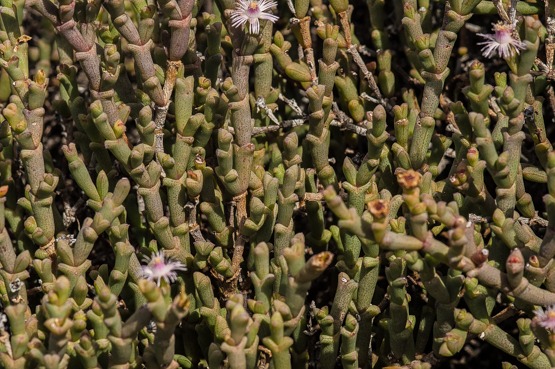
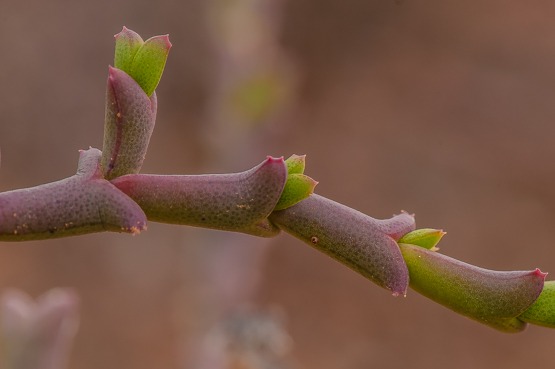
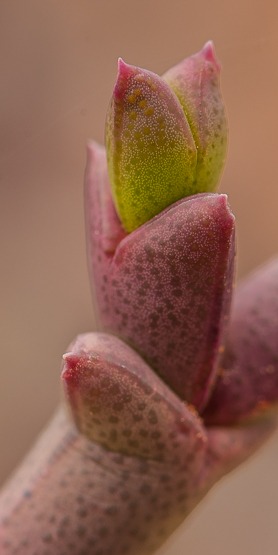
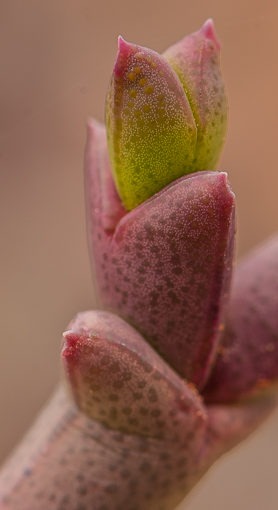
Thanks Frans, that’s interesting .
Hello Luise,
Thanks for stopping by the blog again.
Hello Luise, Thanks for stopping by the blog again.